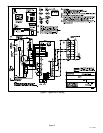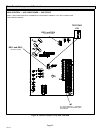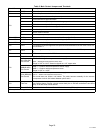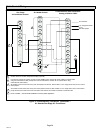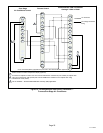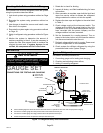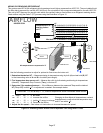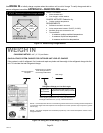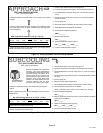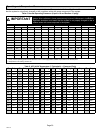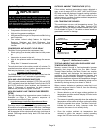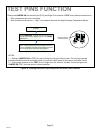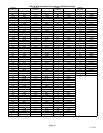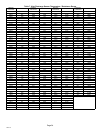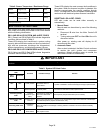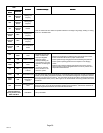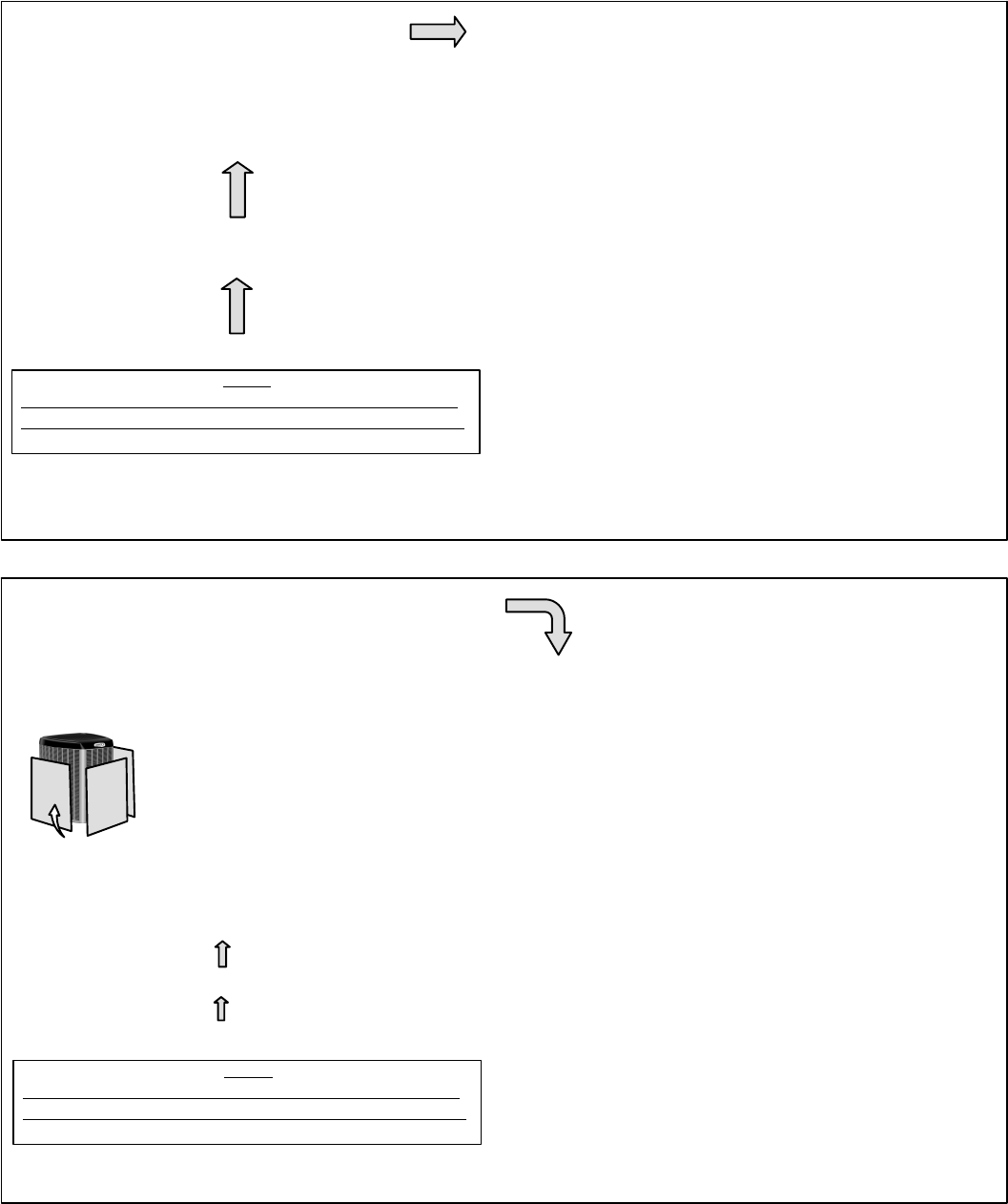
Page 29
XC17 SERIES
APPº (Approach) Values(F:+/−1.0° [C: +/−0.6°])*
If refrigerant added or removed, retest to confirm that unit is properly
charged
If value is greater than shown (high approach), add refrigerant; if less
than shown (liquid temp too close to ambient temp, low approach),
remove refrigerant.
1. Confirm proper airflow across coil using Figure 12.
2. Compare unit pressures with Table 4, Normal Operating Pressures.
3. Use APPROACH to correctly charge unit or to verify the charge is
correct.
4. Set thermostat to call for heat (must have a cooling load between
70-80ºF (21−26ºC).
5. Connect gauge set.
6. When heat demand is satisfied, set thermostat to call for cooling.
7. Allow temperatures and pressures to stabilize.
8. Record outdoor ambient temperature:
AMBº =_________
9. Record line temperature:
LIQº = __________
10. Subtract to determine approach (APPº):
LIQº_____ − AMBº _____ = APPº_____
11. Compare results with table to the left.
Models
ºF (ºC)* −024 −030 −036 −042 −048 −060. . . . . .
Any 10 (5.6) 10 (5.6) 6 (3.3) 10 (5.6) 8 (4.4) 8 (4.4). . .
*Temperature of air entering outdoor coil
65ºF (18.3ºC) and Above
TEST AND CHARGE METHOD
APPROACH
* These approach values are also listed on the unit charging sticker
580005−01 located on the access panel.
Figure 15. Using Approach Test and Charge Method
SCº (Subcooling) Values (F:+/−1.0° [C: +/−0.6°])
If refrigerant added or removed, verify charge using the approach
method
If value is greater than shown, remove refrigerant; if less than shown,
add refrigerant
1. Confirm proper airflow across coil using Figure 12.
2. Compare unit pressures with Table 4, Normal Operating Pressures.
3. Use SUBCOOLING to correctly charge unit or to verify the charge is
correct.
4. Set thermostat to call for heat (must have a cooling load between 70-80ºF
(21−26ºC)
5. Connect gauge set
6. Measure outdoor ambient temperature
7. When heat demand is satisfied, set thermostat to call for cooling
8. Allow temperatures and pressures to stabilize.
NOTE − If necessary, block outdoor coil to maintain 325 − 375 psig.
9. Record liquid line temperature:
LIQº = ______
10. Measure liquid line pressure and use the value to determine saturation
temperature (see Table 5):
SATº = ______
11. Subtract to determine subcooling (SCº):
SATº_____ − LIQº _____ = SCº _____
12. Compare results with table to the left.
Models
ºF (ºC)* −024 −030 −036 −042 −048 −060. . . . . .
Any 4 (2.2) 4 (2.2) 7 (3.9) 5 (2.8) 6 (3.3) 6 (3.3). . .
*Temperature of air entering outdoor coil
SUBCOOLING
TEST AND CHARGE METHOD
65ºF (18.3ºC) and Above
* These subcooling values are also listed on the unit charging sticker
580005−01 located on the access panel.
CARDBOARD OR
PLASTIC SHEET
BLOCK OUTDOOR COIL: [sometimes
necessary with lower temperatures]
Use cardboard or plastic sheet to restrict
the airflow through the outdoor coil to
achieve pressures from 325−375 psig
(2240−2585 kPa). Higher pressures are
needed to check charge. Block equal
sections of air intake panels and move
coverings sideways until the liquid
pressure is in the above noted ranges.
Figure 16. Using Subcooling Test and Charge Method



